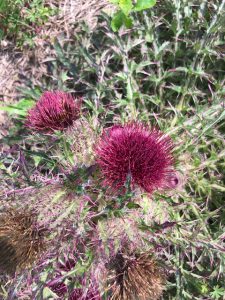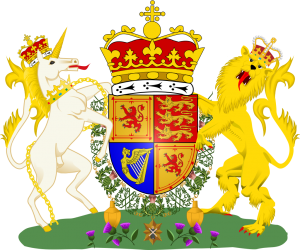
Biking along the Blackwater Heritage Trail recently, my son pointed out an intimidating-looking flower and asked me about it. We pulled over and looked closely at the spiked leaves and bristles along the stems. Having experienced the unseen tiny hairs of a prickly pear cactus, he asked if this was the same. Thankfully, the pointy protrusions of a thistle are much more obvious and easier to avoid.
There are seven species of thistle (Cirsium spp.) in Florida, but we mostly likely came across the dramatically named horrid thistle (aka purple thistle) (Cirsium horridulum) based on the leaf shape, abundant thorns, and deep purple of the flower. Thistles are a hard-fought weed in pastures, outcompeting and disturbing growth of livestock forage grasses.
On a roadside, though, they are fascinating plants to investigate. Their elaborate defenses from would-be herbivores are examples of the lengths that plants can to go to for survival. The large pink or purple flower is a big target, and a favorite one, for many species of pollinator insects (including butterflies) and birds, while the spines prevent mammals from approaching more than once. We often discuss the ways animals hide, camouflage, or protect themselves with sharp teeth, horns, or claws, but it is particularly interesting to see how plant life does the same thing.

In fact, the thistle’s self-defense mechanism made it the national symbol of Scotland. According to 800-year old legend, during a Viking invasion on the Scottish coast, the Norsemen removed their footwear in an attempt to sneak up on sleeping Scottish clansmen. However, the cry of pain from a shoeless attacker—after stepping on thistles—alerted the Scots in time to defend themselves and their homeland. Since the 1400’s, thistles have been used on Scottish coins, coats of arms, soccer mascots, and other official insignia along with the motto, Nemo me impune lacessit (“No one provokes me with impunity”). Now, THAT is one tough flower.
 0
0
